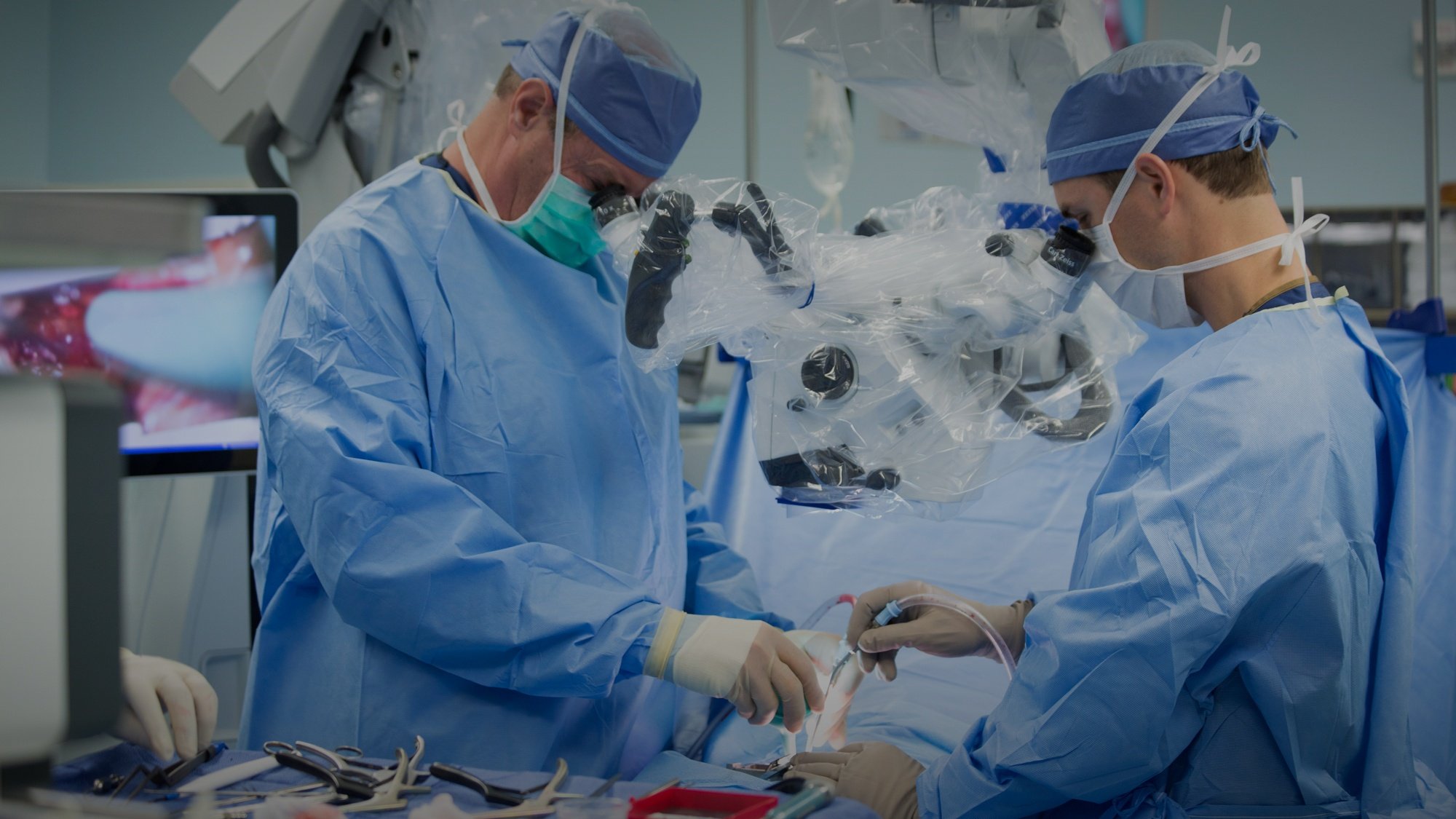Back and neck pain can be debilitating, interfering with everything from daily routines to long-term health goals. For decades, patients facing serious spine conditions had limited options—often involving highly invasive open surgeries with long recovery times. But recent advances in minimally invasive spine surgery (MISS) have transformed the field, offering patients faster recovery, reduced pain, and lower risks. In this post, we’ll explore the benefits, techniques, and procedures of minimally invasive spine surgery, with insights from leading experts.
VIDEO: Dr. McKnight on Minimally Invasive Spine Surgery
What is Minimally Invasive Spine Surgery?
Minimally invasive spine surgery refers to surgical techniques that use small incisions, specialized instruments, and real-time imaging to treat spinal disorders without the need for large openings or significant disruption to surrounding tissue. Unlike traditional open spine surgery, which may require a 5" to 6" incision and significant muscle stripping, minimally invasive spine surgery usually involves incisions less than an inch long.
“How can I get my job done by causing the least amount of impact to a patient and getting them back to doing everything that they can as quickly as they can?” said Braden McKnight, MD, board-certified orthopedic surgeon and fellowship-trained spine specialist. “That may mean smaller incisions, that may mean procedures that allow motion preservation. Ultimately, I want my patients to be up and back to their normal lives as quickly as they can and that's really what minimally invasive spine surgery provides.”
 "Minimally invasive spine surgery is all about maximizing outcomes while minimizing disruption."
"Minimally invasive spine surgery is all about maximizing outcomes while minimizing disruption."
Braden McKnight, MD | Fellowship-trained Orthopedic Spine Surgeon | Minimally Invasive Spine Surgeon
Benefits of Minimally Invasive Spine Surgery
Minimally invasive spine surgery offers a variety of benefits that make it an attractive option for many patients, including shorter recovery time, less pain and minimal scarring.
“Most of my patients are shocked by how quickly they bounce back after a minimally invasive spine surgery,” Michael J. Dorsi, MD, board certified neurological spine surgeon, said. “We’ve had people walking the same day after surgery, which is something that was unheard of a decade ago.”
- Shorter Recovery Time: Because the procedure is less traumatic to the body, many patients return home the same day or within 24–48 hours.
- Less Postoperative Pain: With smaller incisions and less muscle dissection, patients often report less pain and reduced need for narcotic pain medications.
- Reduced Risk of Infection: Smaller wounds are less likely to become infected, leading to safer outcomes.
- Minimal Scarring: Since the incisions are tiny, scarring is minimal and often hidden.
- Lower Blood Loss: A more targeted approach reduces the risk of blood loss during the operation.
 "One of the most surprising things for patients is how little scarring they have — sometimes it’s just a bandage over what looks like a paper cut."
"One of the most surprising things for patients is how little scarring they have — sometimes it’s just a bandage over what looks like a paper cut."
Michael J. Dorsi, MD | Board Certified Neurological Spine Surgeon

Common Procedures Performed Using Minimally Invasive Spine Surgery
Minimally invasive spine surgery is not a one-size-fits-all solution but can be applied to a range of spinal issues. Common minimally invasive spine procedures include:
- Discectomy: Removal of a portion of a herniated disc that is pressing on a nerve.
- Laminectomy: Removing part of the vertebral bone to relieve pressure on the spinal cord.
- Spinal Fusion: Stabilizing the spine by fusing two or more vertebrae using rods and screws.
- Vertebroplasty and Kyphoplasty: Procedures to stabilize compression fractures in the spine.
- Foraminotomy: Widening the space where nerve roots exit the spine to relieve nerve compression.
“The range of conditions we can now treat with minimally invasive techniques is growing every year—from herniated discs to complex deformity corrections,” said Bjorn Lobo, MD, FAANS, a board-certified and dual fellowship-trained neurosurgeon specializing in spine surgery and brain tumor surgery.
 “There’s no single approach that works for every spine condition — and that’s the beauty of modern spine care. We work closely with each patient to develop a personalized treatment plan, choosing the least invasive, most effective option based on their unique needs and goals.”
“There’s no single approach that works for every spine condition — and that’s the beauty of modern spine care. We work closely with each patient to develop a personalized treatment plan, choosing the least invasive, most effective option based on their unique needs and goals.”
Bjorn Lobo, MD, FAANS | Board-Certified Neurosurgeon

Key Tactics and Technologies Used in Minimally Invasive Spine Surgery
The success of minimally invasive spine surgery relies heavily on modern technology and tactical precision. Some of the critical components include:
- Tubular Retractors: These instruments allow surgeons to gently separate muscle fibers instead of cutting them.
- Intraoperative Imaging (fluoroscopy or CT-guidance): Real-time imaging provides pinpoint accuracy during the procedure.
- Microscopes and Endoscopes: Surgeons use these tools to see fine structures within the spine without making large incisions.
- Robotics and Navigation Systems: These improve the accuracy of implant placement and reduce human error.
 "High Technology means safer surgeries, more predictable outcomes, and treatment plans as precise as the tools we use."
"High Technology means safer surgeries, more predictable outcomes, and treatment plans as precise as the tools we use."
Nick Jain, MD | Board-Certified Orthopedic Spine Surgeon
Patient Selection and Considerations
Not everyone is a candidate for minimally invasive spine surgery. Ideal patients typically have localized spinal conditions such as disc herniation, spinal stenosis, or mild-to-moderate instability. More complex spinal deformities or cases requiring multi-level fusion may still require open surgery.
Preoperative planning is crucial. Advanced imaging (MRI, CT scans) helps determine the surgical approach and whether minimally invasive spine surgery is feasible. Patient health, age, and lifestyle also factor into the decision.
“While minimally invasive spine surgery is a powerful tool, it’s not a silver bullet. We always tailor the approach to the individual — what’s minimally invasive for one patient might not be for another,” Dr. Jain said.
Recovery and Outcomes
Postoperative recovery is generally faster with minimally invasive spine surgery. Patients often resume walking within hours of surgery and can return to light activity within a few weeks. Full recovery depends on the specific procedure and the patient’s preoperative condition, but it is typically 50–70% faster than traditional surgery timelines.
Most patients report significant pain relief, improved mobility, and enhanced quality of life. Studies also show high satisfaction rates and low complication risks.
Minimally invasive spine surgery is revolutionizing how we treat spinal disorders. With reduced pain, quicker recovery, and lower complication rates, minimally invasive spine surgery empowers patients to return to their lives with less disruption and greater confidence.
As Dr. Dorsi puts it, “minimally invasive spine surgery represents the best of modern medicine — less trauma, faster healing, and outcomes that rival traditional surgery.”
Minimally invasive spine surgery may not be suitable for everyone, but for many, it’s a transformative option that offers hope without the hardship of invasive surgery. Schedule a consultation with one of DISC’s leading spine specialists to figure out if minimally invasive spine surgery is right for you.

About the author
discmdgroup DISC Sports and Spine Center (DISC) is one of America’s foremost providers of minimally invasive spine procedures and advanced arthroscopic techniques. Our individually picked, highly specialized physicians apply both established and innovative solutions to diagnose, treat, and rehabilitate their patients in a one-stop, multi-disciplinary setting. With a wide range of specialists under one roof, the result is an unmatched continuity of care with more efficiency, less stress for the patient, and a zero MRSA infection rate. Read more articles by discmdgroup.









